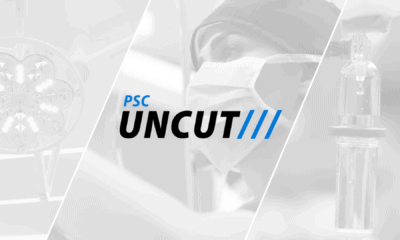One of the most common questions patients concerned with facial aging ask is, when should I move from fillers to facelift surgery? The query is legitimate, and also bothersome as it really depends on a patient’s unique situation.
Board certified plastic surgeons Dr. Brad Calobrace of Kentucky and Dr. Shaun Parson of Arizona give insights into their own processes in determining when it’s time to move from non-surgical facial procedures to surgery.
Conservation is Critical
A plastic surgery consultation is the most important aspect of every journey towards enhancement. PSC surgeons have frequently detailed how influential and critical a consult is; sometimes the majority of the “work” is done in these sessions.
Facelift consultations are no different. Without knowing what a patient wants, what a patient thinks they want, and what they’ve had before, it’s very difficult to make a decision that guarantees a great result.
“You need to have a thoughtful dialogue,” explains Dr. Parson. “We don’t live in a black and white world, we live in a gray world. Sometimes what I see and what I perceive is not what they perceive in the mirror. It’s really important to talk!”
After listening to a patient describe their issue and what they’d like to achieve, it’s time for another essential aspect of the consult to take place: patient education by the surgeon. If goals are unrealistic, if the procedure being asked for will not achieve the desired results, patients need to know that. Trusting an experienced, board certified plastic surgeon to tell you the truth is absolutely one of the most important boxes to have checked.
When it comes to facial aging specifically, the journey from fillers to facelift is hardly ever the same. Some people need rejuvenation earlier than others, while some may be fine just using fillers for awhile. The difficult juncture for a surgeon is when a patient who only wants filler actually needs a facelift.
“It’s really important to not let patients keep using volume to deal with sag,” explains Dr. Calobrace. “That’s what’s happening, you see a 70 year-old that comes in who has never had any facial procedures who wants filler. That can be really challenging, and they expect a facelift result. It’s not wrong to go ahead and really recommend a facelift. It’s not always better to say, ‘Well, let’s start with fillers.’ It depends upon when they come to see you and what they’re expecting out of the final results.”
The Move From Fillers to Facelift
Again, it’s difficult to chart a general timeline for fillers to facelift when patients’ facial aging can be so varied. There are some key things to look out for, however, that indicate that a conversation about surgery may be next.
Indications that it may be time to move from fillers to facelift:
- Loose skin
- Major loss of facial volume
- Facial sag
- Turkey neck
When the skin sags and drapes loosely, fillers will not be able to provide the necessary rejuvenation to merit their injection. In this situation, skin needs to be removed via a facelift.
“We work as a team in my practice, so I’ll have my facial filler providers come in and say, ‘Hey, I can’t do anything with this patient anymore. We really need to do a surgical option at this point.'” shares Dr. Parson. “It’s a waste of their time, it’s a waste of their money. We want to get good results and not try to make false promises.”
Trusting Your Surgeon
While Botox, fillers, and the rest of non-surgical devices and procedures make cosmetic improvement much more relatable, it’s still incredibly important to trust those who are performing the procedures. Not only should a patient have confidence in their surgeon’s abilities and knowledge, but also trust their suggestions. A great physician will say if and when a procedure will be a waste of time and money, something perhaps not common across the board.
Until a patient visits and consults with an experienced, board certified plastic surgeon, it’s very hard to tell what they may or may not need. Although the Internet is a tremendous resource that can help zero in on a handful of options, it will take experienced surgical hands to make the final, right call for each individual patient.
“People appreciate sincerity,” says Parson. “If you have good conversation, good dialogue – and just ask, what do they want? What do they want for downtime? What can they do? People are very reasonable, you just need to have that honest conversation.”








Facebook
Twitter
Instagram
YouTube
RSS